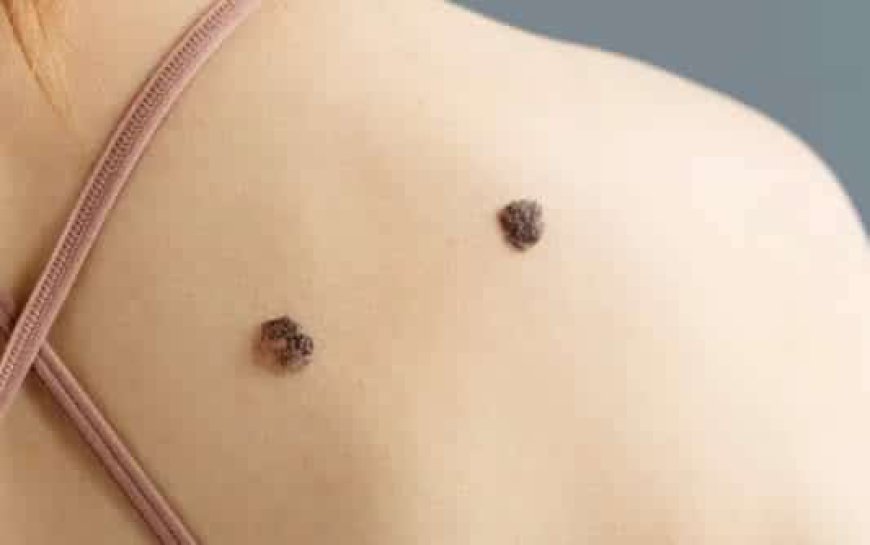Clear Skin Awaits: The Most Effective Skin Tag Removal Treatments

Skin tags are common benign growths that can appear anywhere on the body, often causing aesthetic concerns for many individuals. While they are harmless, their presence can lead to discomfort and self-consciousness. Fortunately, various skin tag removal treatments(علاج إزالة علامات الجلد) are available to help you achieve smoother skin. This blog will explore the most effective options, providing insights into each method and helping you choose the right one for your needs.
Understanding Skin Tags
What Are Skin Tags?
Skin tags are small, soft, benign tumors that usually hang off the skin and can vary in size. They are typically flesh-colored or slightly darker and are most commonly found in areas where skin rubs against skin or clothing, such as the neck, underarms, and eyelids.
Causes and Risk Factors
The exact cause of skin tags remains unclear, but several factors can contribute to their development. Common causes include:
- Friction: Skin tags often occur in areas prone to friction, such as folds of skin.
- Genetics: A family history of skin tags may increase your likelihood of developing them.
- Hormonal Changes: Hormonal fluctuations, particularly during pregnancy, can lead to the growth of skin tags.
- Obesity: Overweight individuals are more likely to develop skin tags due to increased friction.
Why Remove Skin Tags?
Aesthetic Concerns
Many people choose to remove skin tags for cosmetic reasons. Their presence can affect self-esteem and confidence, particularly if they are located in prominent areas.
Discomfort and Irritation
Skin tags can sometimes become irritated, especially if they are in areas that experience frequent friction, such as under the arms or around the neck. Removal can alleviate discomfort.
Preventing Further Growth
In some cases, individuals may prefer to remove skin tags to prevent additional growth or the possibility of them becoming snagged or torn.
Common Skin Tag Removal Treatments
1. Cryotherapy
What Is Cryotherapy?
Cryotherapy is a popular method for removing skin tags. It involves freezing the tag using liquid nitrogen, which causes the cells to die and the tag to fall off over time.
Benefits of Cryotherapy
- Quick Procedure: The process usually takes only a few minutes.
- Minimal Discomfort: Most patients report only minor discomfort during the procedure.
- No Scarring: Cryotherapy typically leaves little to no scarring.
2. Electrosurgery
How Does Electrosurgery Work?
Electrosurgery uses high-frequency electrical currents to cut or burn off skin tags. This method is effective and quick, often requiring only a local anesthetic.
Advantages of Electrosurgery
- Precision: The electrical current allows for precise removal, reducing the risk of damage to surrounding skin.
- Immediate Results: Skin tags can be removed quickly, often in a single session.
- Minimized Bleeding: The heat from the current helps to seal blood vessels, reducing bleeding during the procedure.
3. Ligation
What Is Ligation?
Ligation involves tying off a skin tag with a small piece of thread or string, cutting off its blood supply. This method causes the skin tag to eventually fall off.
Pros of Ligation
- Simple Procedure: This method can often be done at home with minimal equipment.
- Cost-Effective: Ligation is typically less expensive than other methods.
- No Scarring: Since this method is non-invasive, it usually leaves no visible scars.
4. Topical Treatments
Overview of Topical Treatments
Over-the-counter topical treatments designed for skin tag removal are available. These products typically contain acids that help dissolve the tag.
Benefits of Topical Treatments
- Convenient: These treatments can be applied at home, making them convenient for many individuals.
- Painless: Most topical solutions are painless, making them a non-invasive option.
- Cost-Effective: These products are often less expensive than professional treatments.
5. Surgical Excision
What Does Surgical Excision Involve?
Surgical excision involves cutting off the skin tag with a scalpel. This method is usually reserved for larger tags or those in sensitive areas.
Advantages of Surgical Excision
- Complete Removal: Surgical excision ensures complete removal of the skin tag.
- Ideal for Larger Tags: This method is effective for larger skin tags that may not respond well to other treatments.
- Minimal Recovery Time: Most individuals can return to their normal activities shortly after the procedure.
Aftercare Following Skin Tag Removal Treatments
1. Caring for the Affected Area
After any skin tag removal treatment, it is crucial to care for the area to prevent infection. Keep the area clean and dry, and avoid applying any irritating substances.
2. Monitoring for Infection
Watch for signs of infection, such as increased redness, swelling, or discharge. If any of these symptoms occur, consult a healthcare professional for guidance.
3. Follow-Up Care
If you undergo a procedure that requires follow-up appointments, be sure to attend these to monitor healing and ensure proper recovery.
Preventing Skin Tags from Recurring
1. Maintain a Healthy Weight
Maintaining a healthy weight can reduce friction and the risk of developing new skin tags.
2. Minimize Friction
Avoid tight clothing and accessories that may cause friction in areas prone to skin tags.
3. Regular Skin Checks
Conduct regular skin checks to monitor for new growths and seek removal promptly if any appear.
Conclusion
Achieving clear skin is possible with the right skin tag removal treatments. Whether you choose cryotherapy, electrosurgery, ligation, topical treatments, or surgical excision, each method has its benefits and considerations. It's essential to weigh these options carefully and consider your individual needs and preferences. By understanding these treatments and taking preventive measures, you can feel confident and comfortable in your skin once again. Remember, if you have concerns about skin tags or removal methods, consulting a healthcare professional can provide valuable insights tailored to your situation.

 Uzma5364
Uzma5364